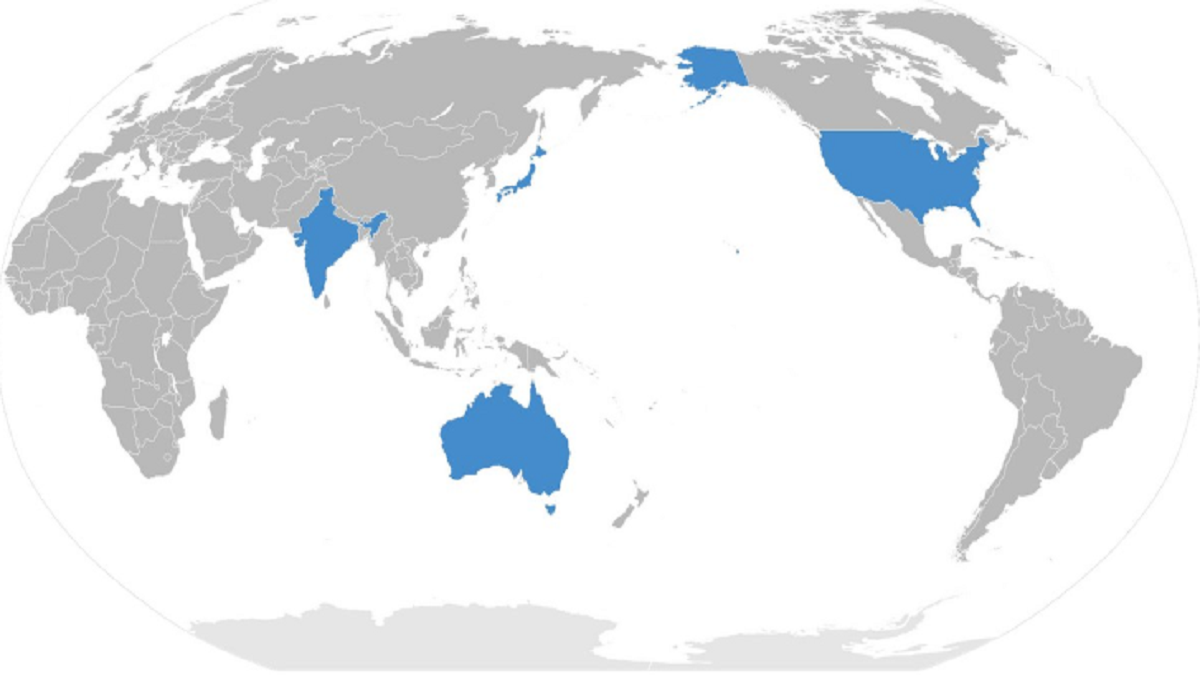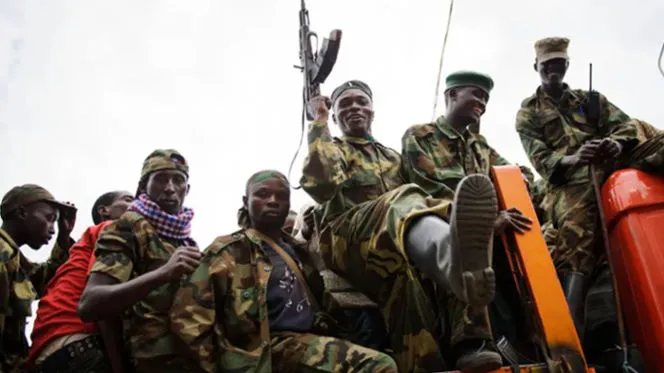Estimably, Indian diplomacy is partly bemusing and partly intuitively encouraging, which amidst these times, despite Covid-19, is obvious. There is no doubt about the very fact that India’s EAM Dr S. Jaishankar is a capable diplomat, who has earned and led India towards some important avenues, which if India had exited NAM even before the beginning of BRICS in 2004, they would have achieved relatively. The foreign policy, however, still—despite the artificial creation of binary politics and visions between the Global Progressives (Democratic Socialists, Cultural Marxists, Pseudo-Liberal Globalists & Traditional Communists) & the Global Conservatives (Ethnonationalists, Modern Conservatives, Civilizational Traditionalists & Cultural Relativists)—is based on the inter-exchange of multilateralism and plurilateralism & the role of federal and statutory governance. In fact, India has exited the dark Leviathan of the NonAligned Movement already, and there is no single event to mark the exit because the NAM-Exit became possible due to certain important events. The COVID19 pandemic, obviously, followed by the war of iteration followed in Ladakh in June 2020 have been some key and truer events that reflect the same. It is better not to agree with the NAM-status quoists like Rahul Gandhi, Shashi Tharoor and Shivshankar Menon, who do not wish to acknowledge the real achievements and failures of the Indian Government. No government is perfect, and there is no ounce of doubt in it. However, it requires contingent efforts from the relevant parties to lead something.
India certainly has achieved its status beyond the past it had, and the process was harder than anything easier. It is impressive that unlike the hypocrisy of the rightwing in the West is a historic scar on Global Conservatism, India is sharing some good support from Global Conservative governments and perhaps is a part of the same, but with a twist of pluralism. Since, the Left-Right binary is artificial by its origin, because the triad of MarxismSocialism-Communism has more to do with the West than with the East, historically, it does not work the same in Asia and Africa, even if it is imposed. More or less, an amalgamation of Socialism and political Islam is tried to be shared across ASEAN and BIMSTEC countries. The success in the same is not that much, but the impact it has led in the past, in Myanmar, in Kashmir, in Malaysia, in Central Asia as well, is yet to be reversed slowly. India represents civilizational rejuvenation, and we can see that not just through the epitome of scriptures and the astute diversity of approaches towards diplomacy, security and spirituality that thinkers had. Therefore, underestimating the potential of Indian diplomacy and politics under the post-colonial TWAIL charade would be an abysmal undertaking of the Indic ethos, for which people should stand for. In this article, it would be discussed as to how India can utilize its capabilities and constraints to convert the ‘minilateral’ image and intangibility of QUAD into some tangible, multilateral arrangement at least in the coming 5 to 10 years, if not a multilateral organization still.
The Asian NATO: Myth and Realities
NATO, the European Union, CSTO & Council of Europe are the most prominent security-related multilateral organizations in Europe-Russia, considering EU to be the most confused with regards to the clarity of mandate and action over developing a joint European defence pact. That can be related to the leadership of the crown of Europe, which is Belgium, France, Netherlands, Spain and Germany in terms of the political policy they develop. Yet, due to the populist and Euroskeptic reactions to the ArmeniaAzerbaijan conflict, the 2015 Migration Crisis, and other relevant developments, Europe has at least tried to come with an apt taking towards realism and action, and Emmanuel Macron, the French President—must be commended for this. However, in the example of Europecentric alliances and counteralliances, we need to realize that the role of economic development and empowerment, ideological clarity and alignment on certain policies, political issues and legal issues & the shedding of the kleptocratic imposition of preference towards international peace and security as the only option for multilateral organizations beyond Europe and Asia—have been significant, no matter what. EU is a success and a legal marvel because the member-states respected the very idea of rule of law in a reasonable manner, which make Europe safer, prosperous and happier. The problems that emerged with Europe have been related to its approach towards conflict zones, the global south countries, proxy NGOs, terror groups and pressure groups, and the reasonable grounds of uncontrolled immigration. Now, it is of utmost importance to also realize that the EU-China relations would not be easier in the coming years, and since Xi Jinping is at the centre of discussion these days due to the pandemic and China’s evasive economic and military measures, it is a good sign for European Union states to decrease their interconnectivity towards China. NATO too was not resilient enough, in terms of spending equity, which POTUS Donald J Trump effectively handled.
Now, with respect to the Indo-Pacific region itself, which consists of significant BIMSTEC and ASEAN countries, minus China and its formidable allies such as Pakistan, DPRK and the rest, there are some obvious issues which were dealt in the QUAD 2020 summit, which is a matter of true acknowledgement. The obvious issues dealt in the summit were related to COVID19 response and recovery, Counterterrorism, maritime security, regional security, countering disinformation, resilient supply chains, HA/ DA, Quality infrastructure, ASEAN-centrality led infrastructure and cybersecurity. Except on disinformation countering, resilient supply chains, HA/DR and Cybersecurity, on the rest of the issues, all the four nations had good agreements over. At relevant diplomatic levels, the acceleration of the development of QUAD yet depends on the China factor (primarily), the economic plight of the four actors, and the strategic future they wish to seek and react accordingly. If this summit had not happened, and the chance of a 2+2 summit between India and the US would not have been possible, then it would have been clear enough that the future of QUAD has some stifled uncertainties despite the China factor. Additionally, issues that arise in Asia and the Indo-Pacific are trilateral, at most by nature. Considering India’s case, NAM was not entirely a matter of isolation. C Raja Mohan points this out incredibly in one of his recent pieces on some of the feats that India tried to have with respect to the rubric of alliances. Former PM Nehru adhered with the principles of NAM, but after the 1962 Indo-China war, it was way clear that this policy should have been ended very earlier.
The Dark Reflections of the Cold War and the Common Syndrome in Indian Diplomacy
The dark reflections of the Cold war did not even end after the disintegration of the USSR, because after the 1990s, when the issue of Kashmir was at height, an unfriendly Clinton presidency was not digestible. From Bush Jr to Trump, India catered amazing relations with the Americans, and the followed formation of SAARC, BRICS, BIMSTEC and ASEAN paved ways for more economic multilateralism. Another forecasting angle in the case of economic relationship was discussed by Samir Saran, President, Observer Research Foundation in the Handbook on Indian Foreign Policy (2015), in which he pointed out the role of G4 into the UN. In due reiteration, we must therefore also understand the way preferences are made in multilateral organizations. For example, the need of the conception of veto power or concurrent vote for the five permanent members of the UN Security Council drives from the primacy of what the UNSC still reckons – which is international peace and security.
Till now, socio-economic needs and development is not the primal agenda of the Security Council, which in general, despite China, has been the core demand of the G4 countries. Even their cooperation and support in peacekeeping, military initiatives, economic cooperation, SDGs and climate change has been essential & noble. Even recently in the UNGA 75th Session, 2020 – the G4 countries raised the issue of UNSC reform. Under Donald J Trump, Emmanuel Macron, Angela Merkel and Boris Johnson, India at least can be confident enough to drive and transform its foreign policy concerns with a relative freedom which it has achieved. Since economic security and development not just due to COVID19, but also due to Chinese mercantilism is at the heart of QUAD+G4+EU segment, it is clear that India needs economic recovery and boost, which would increase its confidence in combating challenges for the QUAD itself. Yet, this 2020 Summit is not a final meeting, and not even a big turning point. The China factor and Trump’s rogue revisionism has appropriately led India and ASEAN countries to rethink their Sino-Russian approaches.
Why NAM-Exit is Required: A Constitutional Philosophy and Realism Dilemma
India’s experience with the Non-Aligned Movement has been very central to its own principles and action in the realm of international relations since 1945. However, the real problems start when the Indian state refuses to develop and transform its people, economy, culture, education strategy and civilizational heritage. That, sadly, is also connected to the way the Indian Constitution has been misused and misinterpreted. The most common ironic examples, with regards to the Indian Constitution are:
• Exploitation of the word ‘secular’ in the Preamble;
• Narrative-based biases over the Basic Structure Doctrine;
• Directionless interpretations of and inclusions in the Part III; Secularism has been developed as a special doctrine in the principles of Indian Constitutional Law. However, considering the worst experiences of the third world approach of international law and the misuse of the ideals of responsibility to protect, India’s juridical capital could never come out of the post-colonial and socio-legal mirage of ultimate pacifism and altruism, which focused on weak neutrality. Instead both as a civilizational and constitutional state, India should focus on better armed and resistant neutrality to preserve secularism as an operative part of the Indic society, with regards to the state-populace relationship. The second problem starts with the Basic Structure Doctrine in the Indian Constitution. Obviously, after Keshavnanda Bharati (1973) & Minerva Mills (1980), the Basic Structure doctrine became a politico-legal doctrine that emanated the protection of constitutional morality, integrity and dignity via neutralizing the negative usage of Article 368. However, no constitution is a perfect document, and neither can that document as a basic law shall be able to dictate how to live, how to survive and embrace the civilizational and justiciable ethos of the state that it enfranchises.
Even if it is not the business of public international law to illustrate or remind how sovereignty itself became the most important tool behind the balancing connectivity between the interactors (NGOs, International Organizations, MNCs, etc.,) & the inter-actors (statutory bodies, national or regional level societies, NGOs, startups, etc.,), it is at least important for any state to realize this. Fortunately, the Indian state does understand this relationship, and has never forgotten it for any sake or cause.
(Read the conclusion on https://link4din.com/guardians-numeric-wisdom)






















